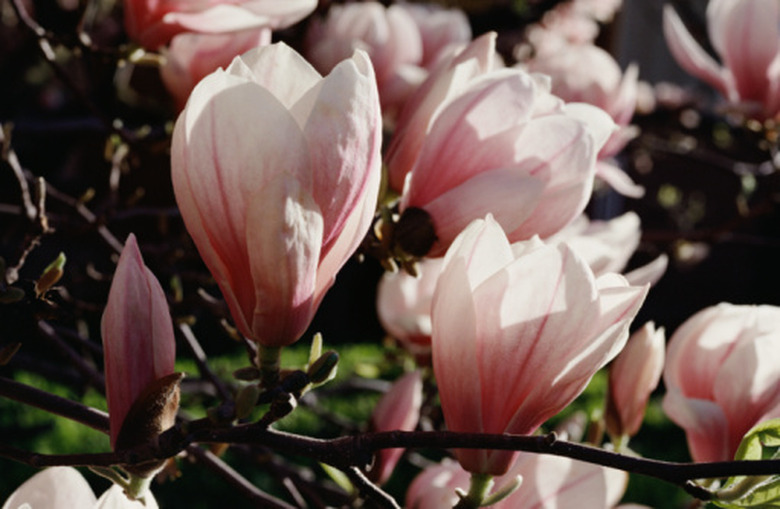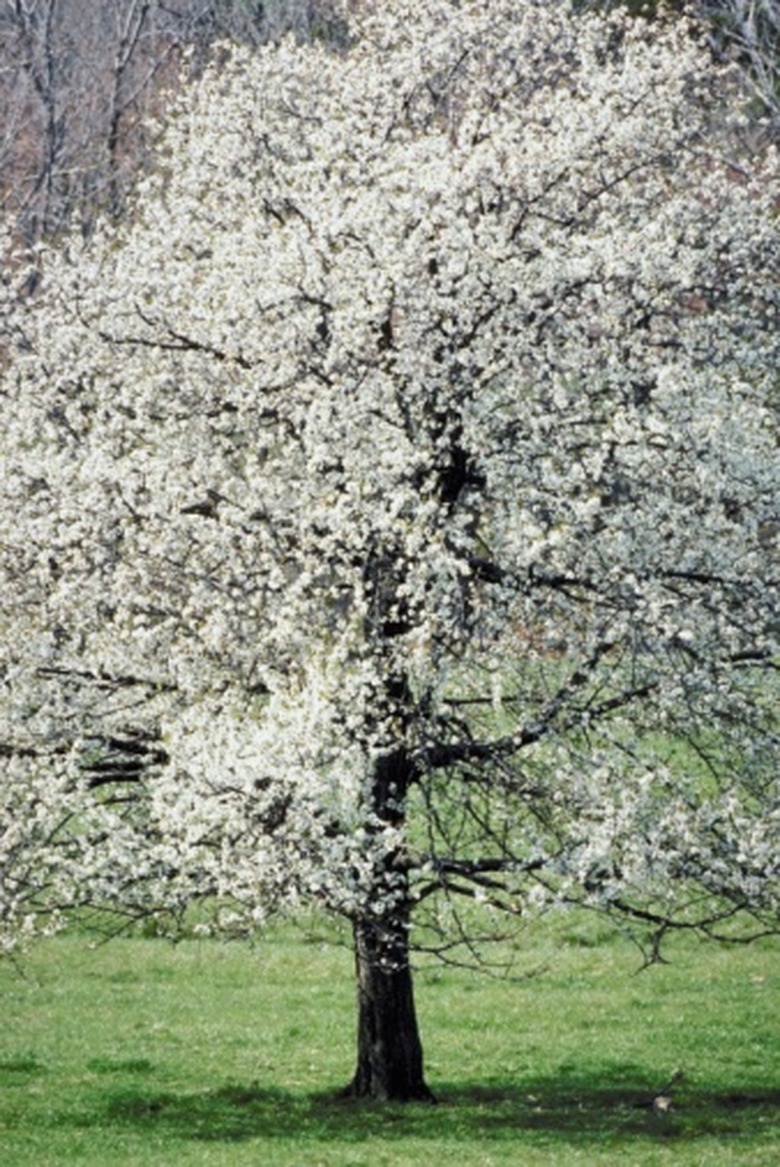What Is The Difference Between The Dogwood Tree & The Magnolia?
The magnolia and dogwood trees available for enhancing a landscape share many characteristics. Both produce attractive flowers, resulting in ornamental fruit. Both types of trees grow native to North America and both come in multiple cultivars of their different species. Differences though exist between these two kinds of trees, including disparities in size, features, growing range and uses.
Size
The dogwoods as a group are much smaller trees when compared to the magnolias. The largest dogwood is the giant dogwood, but it is a behemoth only among its own genus, growing no larger than 40 feet. Flowering dogwood and kousa dogwood, a pair of prominent dogwood species, develop to between 15 and 30 feet. Conversely, the magnolias types, including southern magnolia and cucumbertree magnolia, grow to 80 feet tall on occasion. Also, a flowering dogwood's trunk averages about 8 inches in diameter; that of a southern magnolia can be 3 feet wide.
Flowers
The flowers of a magnolia tree are large and showy, while those of the dogwood are often small and inconspicuous. What make the dogwood flowers ornamentally important in many cases is the modified leaves, known as bracts, that are around the small flowers. They serve to bring attention to the flowers so pollination can occur via insects and birds. Flowering dogwood, for example, possesses these bracts. Magnolia flowers stand on their own beauty and fragrance, with some developing to as wide as 12 inches, such as those of the southern magnolia.
Fall Color
The dogwood trees usually have excellent fall foliage, while the magnolia trees normally lack any autumn brilliance. While the southern magnolia is evergreen throughout most of its range, providing some winter interest, the magnolias as a whole do not produce vivid fall color. For instance, the leaves on the saucer magnolia turn yellowish or brown in fall, according to the Missouri Botanical Garden. However, dogwood species such as kousa and flowering dogwood have deserved reputation for generating bright fall colors. Their leaves change to shades of red, orange, purple and yellow.
Uses
Most of the magnolias require large, open landscapes in which to grow, making them suitable as lawn or shade trees, but not for smaller yards. Their flowers make them possibilities as specimen trees within their range. The dogwood's application in the landscape has fewer limits due to the tree's small size. While they stand on their own as specimen plants, you can also employ them for group plantings to take maximum advantage of their flowering nature in the spring. Dogwoods are also appropriate for shrub borders, bird gardens, patios and in woodland gardens because of their smaller stature.

